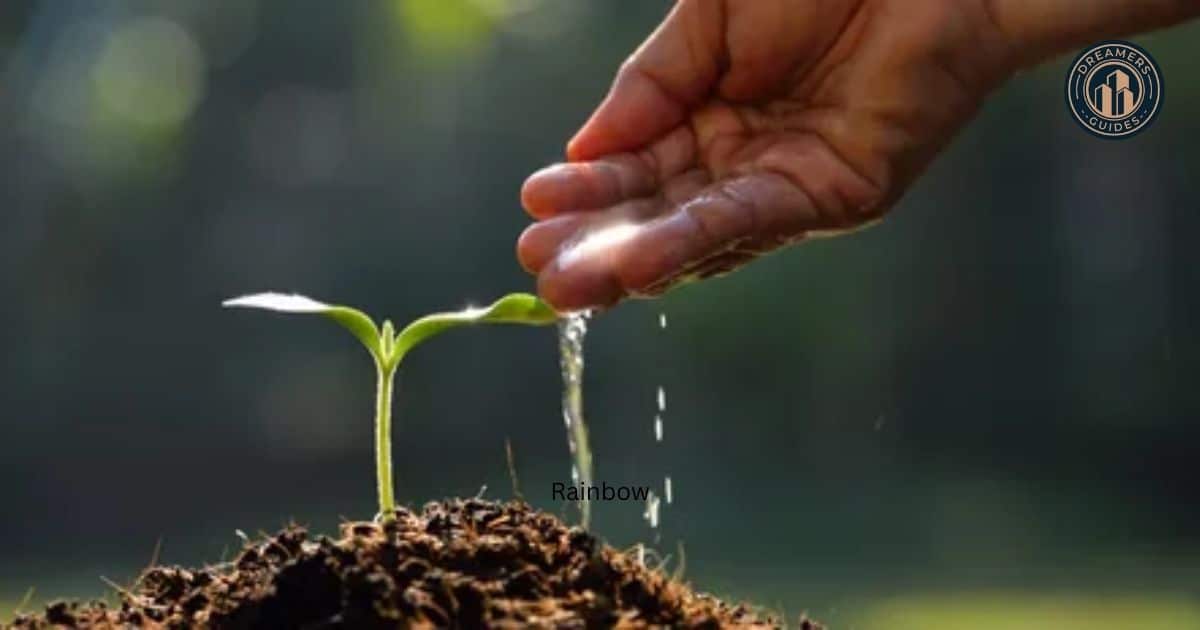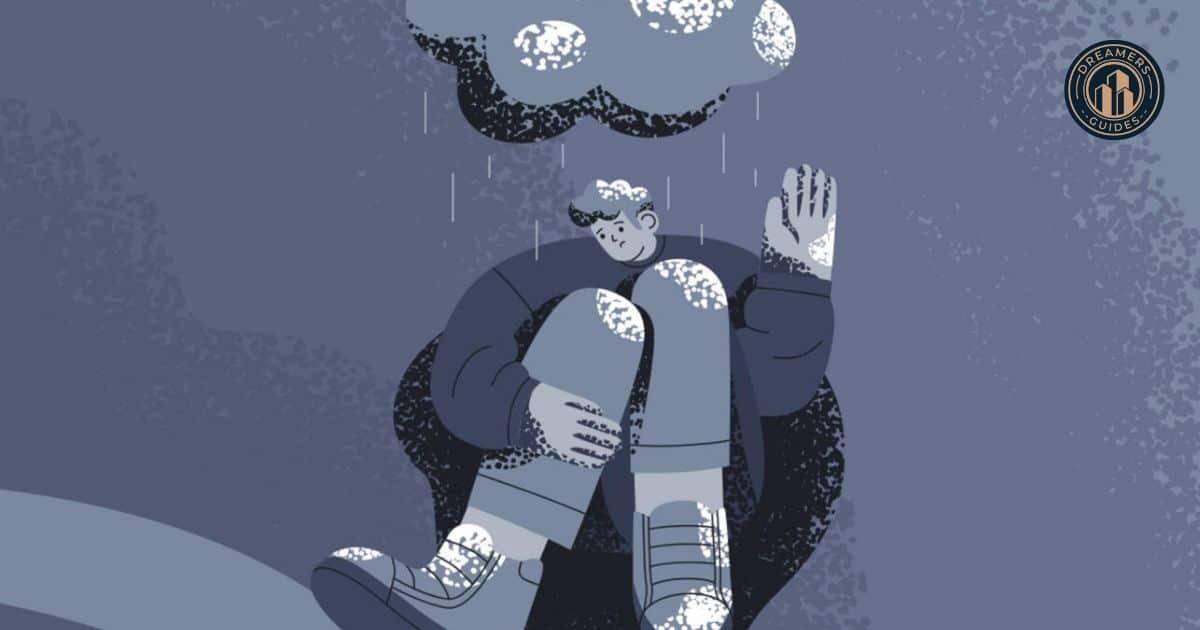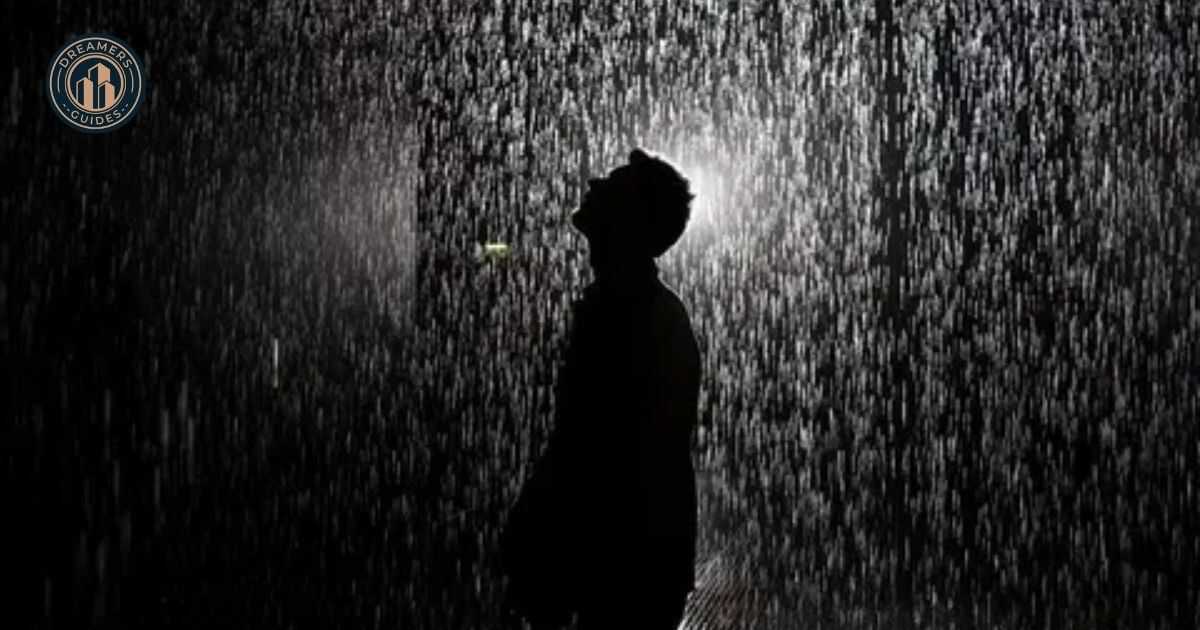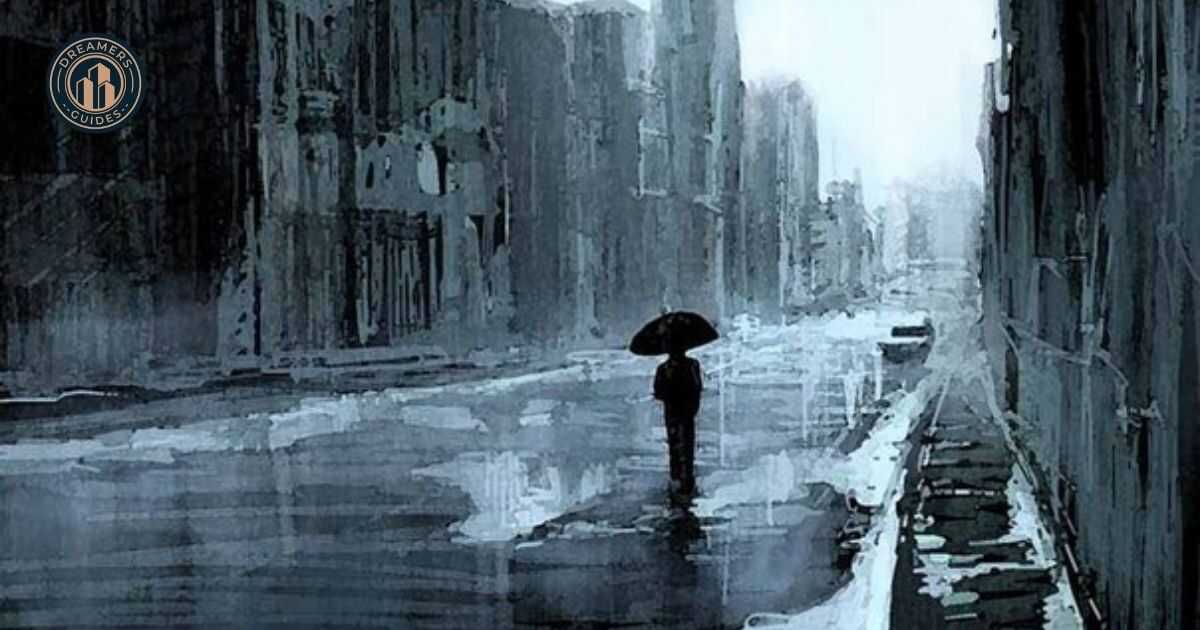Rain has been a powerful force shaping human experience since time immemorial. Far more than just a meteorological phenomenon, rain has seeped into the very fabric of our cultures, myths, and personal experiences. From the pitter-patter of droplets on a tin roof to the mighty downpours that transform landscapes, rain speaks to us in a language that transcends words. In this exploration, we’ll dive deep into the rich tapestry of rain symbolism across various cultures, uncovering the myriad ways in which this life-giving force has influenced our art, literature, spirituality, and daily lives.
Renewal and Rebirth in Nature
Rain has long been revered as a harbinger of new beginnings and revival. In the parched landscapes of many ancient civilizations, the arrival of rain was nothing short of miraculous. It breathed life into withering crops, filled depleted wells, and promised sustenance for both humans and animals alike. This powerful association with renewal has embedded itself deeply in cultural narratives worldwide.

In Hindu mythology, the god Indra wields the vajra, a thunderbolt that brings life-giving rain to the earth. This divine rain not only nourishes crops but also symbolizes the cleansing of the world and the souls within it. Similarly, in Greek mythology, Zeus, the king of gods, was often depicted as the rain-giver, showering the earth with his blessings. These ancient tales highlight the universal human experience of rain as a force of regeneration and hope.
Today, we still feel the transformative power of rain in our modern lives. After a refreshing shower, the world seems to shimmer with new possibilities. The air feels cleaner, colors appear more vibrant, and there’s a tangible sense of a fresh start. This natural phenomenon serves as a powerful metaphor for personal rejuvenation, reminding us that no matter how dry or difficult our circumstances may seem, there’s always the potential for renewal and growth.
Life and Growth
The intrinsic link between rain and the flourishing of life is undeniable. Without water, the very foundation of life as we know it would crumble. This fundamental truth has made rain a potent symbol of life and growth across cultures and time periods. From the smallest seed pushing through the soil to the mightiest redwood stretching towards the sky, every living thing owes its existence to the nourishing power of rain.

In literature and art, rain often serves as a metaphor for personal development and transformation. Just as a tiny acorn requires rain to grow into a mighty oak, characters in stories often undergo their most significant changes during or after rainstorms. This symbolism taps into our innate understanding that growth often comes through challenging experiences – much like plants that grow stronger when they must reach for rain.
Read More About : 15 Symbols of Forgiveness Around the World
The Science Behind Rain’s Growth-Boosting Properties
The life-giving properties of rain extend far beyond simply watering plants. Rain plays a crucial role in a complex dance of nutrients that sustains ecosystems:
- Nitrogen fixation: As raindrops fall through the atmosphere, they absorb nitrogen, a vital nutrient for plant growth.
- Mineral dissolution: Rainwater interacts with soil, releasing essential minerals and making them available to plant roots.
- Nutrient transport: The movement of rainwater through soil helps distribute these nutrients more evenly.
- pH balance: Rain helps maintain the proper acidity levels in soil, crucial for nutrient absorption.
This intricate process mirrors our own journey of personal growth. Like plants absorbing nutrients from rain-soaked soil, we absorb knowledge and experiences from our environment, using them to fuel our own development and transformation.
Cleansing and Purity
Rain’s ability to wash away dirt and grime has made it a powerful symbol of purification across many cultures. The idea of rain as a cleansing force extends beyond the physical realm, often representing spiritual or emotional purification as well. In many religions, rain is seen as a divine gift that can wash away sins or evil influences, offering a chance for a clean slate.

This symbolism of purity is deeply ingrained in various cultural practices. In some Hindu traditions, for example, rain is believed to carry the blessings of the gods and is used in purification rituals. Similarly, in many Native American cultures, rain is seen as a cleansing force that can restore balance to both the natural world and the human spirit.
In literature and film, rain often appears at pivotal moments when characters need redemption or a fresh start. The image of someone standing in the rain, letting it wash over them, has become a powerful visual metaphor for emotional catharsis and renewal. This universal symbol reminds us of our own capacity for change and the possibility of starting anew, no matter our past mistakes.
Sadness and Despair
While rain can symbolize renewal and growth, it also has a long-standing association with melancholy and sorrow. Gray skies and relentless drizzle often mirror feelings of sadness or grief, creating a pathetic fallacy that resonates deeply with human emotions. This connection between rain and emotional turmoil is a common thread in art, literature, and music across cultures.

The link between rainy weather and low mood isn’t just poetic – there’s scientific basis for this association. Lack of sunlight during rainy periods can affect our body’s production of serotonin, a neurotransmitter linked to mood regulation. Additionally, the sound and visual monotony of rain can heighten feelings of isolation or introspection, leading to a more somber state of mind.
The Rain-Mood Connection: What Science Says
Research has uncovered several ways in which rainy weather can impact our psychological state:
- Seasonal Affective Disorder (SAD): Prolonged periods of gray, rainy weather can contribute to this form of depression.
- Barometric pressure changes: Some people experience mood changes or physical discomfort due to shifts in air pressure that often accompany rain.
- Altered sleep patterns: Rainy weather can affect our circadian rhythms, potentially disrupting sleep and mood.
To combat rainy day gloom, consider these strategies:
- Light therapy: Use specially designed lamps to mimic sunlight and boost mood.
- Stay active: Engage in indoor exercises or hobbies to maintain energy levels.
- Practice mindfulness: Use the calming sound of rain as a focus for meditation or relaxation.
Change and Transformation
Rain has an unparalleled ability to transform landscapes, turning barren deserts into lush oases and parched fields into verdant pastures. This visible metamorphosis of the natural world makes rain a perfect symbol for change and personal transformation. In myths and legends across cultures, significant rainfalls often mark the beginning of great changes or epic journeys.

The transformative power of rain mirrors personal growth and change. Just as steady rain erodes a mountainside, our experiences gradually shape us. Over time, we evolve in ways that reflect these influences This gradual transformation can create new paths and formations. Change may be uncomfortable or challenging. Yet it often leads to beautiful new beginnings. Unexpected opportunities for growth arise from these changes.
Read More About : Sun Symbolism & Meaning: Ultimate Guide
Isolation and Loneliness
Rain has a unique ability to create physical and emotional barriers, often leading to feelings of isolation and solitude. The sound of rain on windows or rooftops can create a cocoon-like atmosphere, separating us from the outside world. In literature and film, rain is frequently used to emphasize a character’s sense of alienation or emotional distance from others.

However, this isolation isn’t always portrayed negatively. The cozy feeling of being indoors during a rainstorm can also represent a welcome retreat from the chaos of daily life. It provides an opportunity for introspection, self-reflection, and recharging. This duality makes rain a complex and nuanced symbol, capable of representing both the pain of loneliness and the comfort of solitary contemplation.
Divine Blessings
Across many cultures and religious traditions, rain is viewed as a divine favor or heavenly grace. In agricultural societies, where survival depended on timely rainfall, rain was often seen as a direct gift from the gods. This belief gave rise to numerous rain deities and rain-invoking rituals around the world.

Even in our modern, secular world, we often refer to much-needed rain as a “blessing.” After a long drought, the arrival of rain can feel truly miraculous. This enduring view of rain as a sacred gift speaks to its fundamental importance in sustaining life and its power to inspire awe and gratitude in humans across time and cultures.
Rain Dances and Rituals: A Global Perspective
Many cultures have developed unique rituals to invoke rain, demonstrating its crucial importance:
| Culture | Rain Ritual | Description |
| Hopi (Native American) | Snake Dance | A complex 16-day ceremony involving the handling of live snakes |
| Thai | Cat Parade | Villagers carry cats in baskets, sprinkling them with water |
| South African | Rain Queen | A woman believed to have special rain-making powers performs rituals |
| Australian Aboriginal | Rain Song | Specific songs are sung to encourage rainfall |
| Ancient Mayan | Chaac Ritual | Ceremonies honoring Chaac, the rain god, including offerings and prayers |
These diverse rituals highlight the universal human desire to connect with nature and influence the forces that sustain life. They also serve as powerful community-building exercises, bringing people together in times of need and shared hope.
Sign of Fertility
The life-giving properties of rain have long associated it with fertility and abundance. In many ancient cultures, rain deities were closely linked to fertility gods. This connection reflected the belief that rain was vital for crops to flourish. It extended to all aspects of life and growth.

Mystery and Intrigue
Rain has a unique ability to transform familiar landscapes into mysterious realms. It blurs boundaries, muffles sounds, and creates an atmosphere ripe for intrigue and the unknown. This quality has made rain a favorite tool for writers and filmmakers looking to create suspense or a sense of the uncanny.

The unpredictable nature of rain adds to its mysterious quality. Despite modern meteorological advances, rain still carries an air of uncertainty. This unpredictability highlights our limits in controlling nature. In many cultures, rainy days are linked to increased supernatural activity, adding to the mystery of this natural phenomenon.
Read More About : 17 Symbols of Innocence and Their Heartwarming Meanings
Loss and Mourning
The somber atmosphere created by rain often aligns with feelings of loss and bereavement. Many cultures view rain at a funeral as a sign that the heavens themselves are mourning the departed. The strong connection between rain and grief is evident in many works of art and literature. Rainy scenes often accompany moments of deep loss or sorrow.

However, rain in times of mourning can also offer comfort. The gentle sound of rainfall can be soothing, providing a natural soundtrack for reflection and emotional release. Rain in this context becomes a symbol of the natural cycle of life and death, reminding us that all things, including our grief, will eventually pass.
Hope and Optimism
Despite its associations with sadness and loss, rain also carries powerful connotations of hope and optimism. The rainbow that often follows a rainstorm has become a universal symbol of hope and new beginnings. This image of beauty emerging after difficulty resonates deeply across cultures.

Sayings like “April showers bring May flowers” encapsulate the idea that challenging times often lead to growth and beauty.
In children’s literature, rainy days frequently set the stage for grand adventures or magical discoveries. Teaching young readers to find joy and opportunity even in seemingly gloomy circumstances.
Rain Symbolism in Literature
Writers throughout history have harnessed the rich symbolism of rain to add depth and nuance to their works. In F. Scott Fitzgerald’s “The Great Gatsby,” rain plays a crucial role in key scenes, mirroring the emotional turbulence and underscoring themes of lost dreams and inevitable change.
In Ernest Hemingway’s “A Farewell to Arms,” rain is a recurring motif linked to death and loss. It also symbolizes the protagonist’s deeper understanding of life’s complexities. In Gabriel García Márquez’s “One Hundred Years of Solitude,” years of rain represent both destruction and renewal. This highlights the cyclical nature of history and human experience.

Contemporary authors continue to find new ways to employ rain symbolism. Climate fiction often uses changing rain patterns to represent environmental anxiety and the unpredictability of our future. In thrillers and mysteries, rain frequently creates an atmosphere of foreboding and concealment, adding to the tension of the narrative.
Rain Symbolism in Movies
The visual and auditory impact of rain makes it a powerful tool for filmmakers. The famous dance sequence in “Singin’ in the Rain” uses a downpour to represent pure joy and freedom.
In contrast, the constant rain in Ridley Scott’s “Blade Runner” creates a oppressive, dystopian atmosphere.It underscores the film’s themes of environmental decay and loss of humanity.

Different cultural traditions influence how rain is used symbolically in cinema. In many East Asian horror films, rain and water are associated with the spirit world. Often signaling the appearance of ghosts or supernatural events. American and European films might use a sudden rainstorm to foreshadow dramatic events or to represent a character’s emotional turmoil.
From creating mood and atmosphere to serving as a metaphor for character development. Rain continues to be a versatile and powerful symbol in the hands of skilled filmmakers.
Read More About : 23+ Powerful Symbols of Growth from Around the World
Conclusion
Rain, in all its forms, speaks to something deep within the human psyche. It represents the full spectrum of our experiences – from the joy of renewal and the promise of growth to the depths of sadness and the mystery of transformation. Its universal presence in our lives has made it a rich source of symbolism across cultures and throughout history.
As we’ve explored, rain can represent cleansing and new beginnings, the sorrow of loss, the isolation of loneliness, or the blessing of divine favor. It can symbolize fertility and abundance, or mystery and the unknown. This multifaceted symbolism reflects the complexity of human experience and our deep connection to the natural world.
The next time you find yourself caught in a shower or listening to rain pattering on your roof, take a moment to reflect on what it means to you. Does it evoke feelings of cozy introspection, or does it awaken a sense of adventure? Does it remind you of past sorrows, or does it fill you with hope for the future? By understanding and appreciating the rich symbolism of rain, we can gain deeper insight into our own emotions and experiences.
Remember, just as the earth needs both sunshine and rain to flourish, our lives are enriched by a full range of experiences – both joyful and challenging. Embrace the rain in your life, whatever form it takes. Like a seed nourished by rain, you might find that periods of difficulty lead to unexpected growth and beauty.
In the end, rain reminds us of our place in the greater cycle of nature. It connects us to the world around us and to each other, transcending cultural boundaries and speaking a universal language of renewal, change, and the ever-present potential for new beginnings.